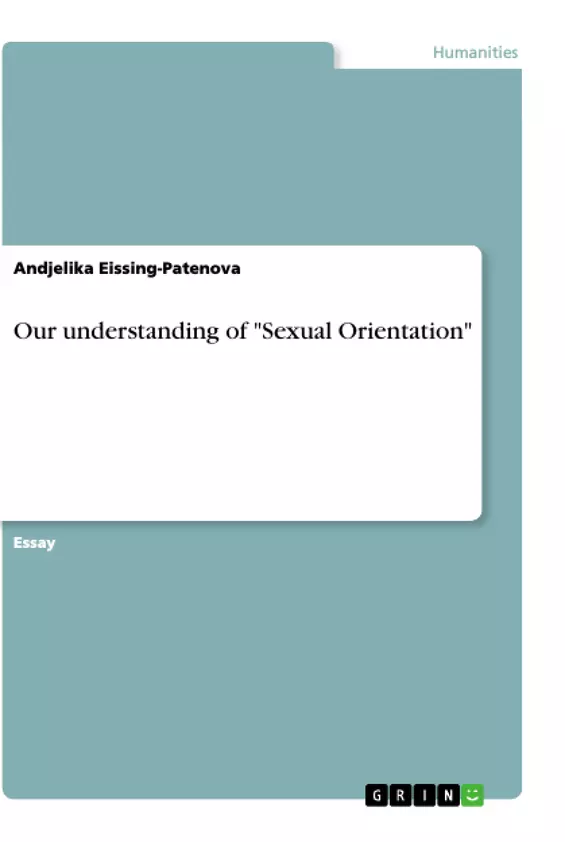Although Western societies become more and more accepting towards the diversity of sexual preferences, a big part is still averse to and discriminatory against other sexual orientations than heterosexuality. One major cause for that is our current understanding of "sexual orientation". The purposes of my paper are to analyze why it promotes discrimination and to discuss how it could be changed, in order to reduce discrimination. Changing our understanding of "sexual orientation" from scratch seems promising, because it means creating a profound breeding ground for anti- discrimination protection and a more tolerant, inclusive and equality based kind of thinking.
Inhaltsverzeichnis (Table of Contents)
- INTRODUCTION
- WHY OUR CURRENT UNDERSTANDING OF "SEXUAL ORIENTATION" PROMOTES DISCRIMINATION
- OUR CURRENT UNDERSTANDING OF "SEXUAL ORIENTATION"
- THE REFERENCE TO THE OWN SEX PROMOTES DISCRIMINATION
- THE RESTRICTION OF PREFERENCES TO ONE'S SEX PROMOTES DISCRIMINATION
- HOW TO REDUCE DISCRIMINATION BY CHANGING OUR UNDERSTANDING OF "SEXUAL ORIENTATION"
- RETAIN THE ELEMENT OF A PREFERENCE PATTERN
Zielsetzung und Themenschwerpunkte (Objectives and Key Themes)
The primary goal of this paper is to analyze the current understanding of "sexual orientation" and its role in promoting discrimination. The author aims to demonstrate how altering this understanding can contribute to a more tolerant and inclusive society, fostering anti-discrimination protection.
- The limitations of the current three-category understanding of sexual orientation (heterosexuality, homosexuality, and bisexuality)
- The harmful effects of associating sexual orientation with the sex of the individual and the inherent discrimination against individuals who do not conform to the "opposite/same" sex paradigm.
- The need for a more inclusive definition of "sexual orientation" that goes beyond sex-based preferences, acknowledging the diversity of attraction.
- The importance of recognizing sexual orientation as a fundamental aspect of individual identity and the legal protection it requires.
- The potential for a revised understanding of "sexual orientation" to create a more equitable and inclusive society.
Zusammenfassung der Kapitel (Chapter Summaries)
The introductory chapter establishes the problem of societal discrimination against individuals with sexual orientations other than heterosexuality. It argues that the current understanding of "sexual orientation" is a key driver of this discrimination and suggests that changing this understanding holds promise for creating a more tolerant and inclusive society.
The second chapter delves into the current understanding of "sexual orientation," highlighting its three core elements: a focus on the sex of the individual, a preference pattern, and a reference to the individual's own sex. It then analyzes how each of these elements contributes to discrimination.
The third chapter explores how changing our understanding of "sexual orientation" can reduce discrimination. It argues for retaining the element of a preference pattern as a fundamental aspect of individual identity, emphasizing its enduring nature and the importance of legal protection for individuals with strongly held sexual preferences.
Schlüsselwörter (Keywords)
The paper focuses on the concepts of "sexual orientation," discrimination, anti-discrimination protection, tolerance, inclusion, and equality. It examines the current understanding of "sexual orientation" and its limitations in fostering inclusivity. The paper advocates for a revised understanding that moves beyond a solely sex-based definition and recognizes the importance of preference patterns in shaping individual identity. It explores the potential of such a revised understanding to create a more equitable and accepting society.
- Quote paper
- Andjelika Eissing-Patenova (Author), 2020, Our understanding of "Sexual Orientation", Munich, GRIN Verlag, https://www.grin.com/document/536748



